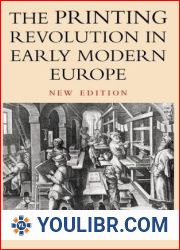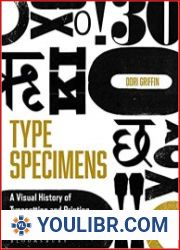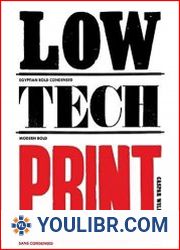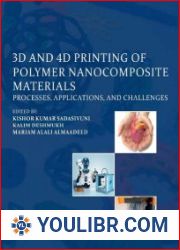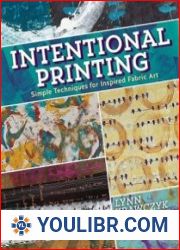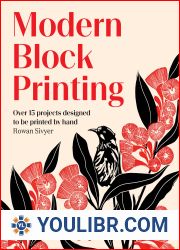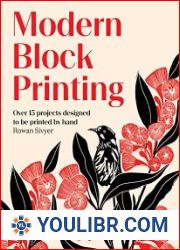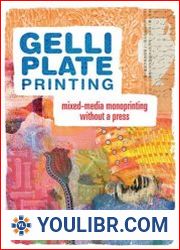
BOOKS - The Prosthetic Tongue: Printing Technology and the Rise of the French Languag...

The Prosthetic Tongue: Printing Technology and the Rise of the French Language
Author: Katie Chenoweth
Year: October 4, 2019
Format: PDF
File size: PDF 29 MB
Language: English

Year: October 4, 2019
Format: PDF
File size: PDF 29 MB
Language: English

The Prosthetic Tongue Printing Technology and the Rise of the French Language In the sixteenth century, the development of printing technology had a profound impact on European culture and society, shaping the course of modernity in ways that are still not fully understood. One of the most significant yet least explored aspects of this transformation is the rise of vernacular languages, particularly in France. In her groundbreaking work, The Prosthetic Tongue, Katie Chenoweth delves into the relationship between printing and the emergence of French as a major cultural and political force during this period. She charts the technological reinvention of French across various domains, including typography, orthography, grammar, politics, pedagogy, and poetics. The Reinvention of French Under King François I, known as the Father of Letters, printing and vernacular language emerged as major cultural and political forces. Beginning in 1529, French underwent a remarkable transformation as printers and writers began to reimagine their mother tongue as mechanically reproducible. This was a veritable new media moment, where the print medium served as the underlying material apparatus and conceptual framework for a revolutionary reinvention of the vernacular.
Технология протезной печати на языке и подъем французского языка В шестнадцатом веке развитие технологии печати оказало глубокое влияние на европейскую культуру и общество, формируя курс современности способами, которые до сих пор не полностью поняты. Одним из наиболее значительных, но наименее изученных аспектов этой трансформации является рост народных языков, особенно во Франции. В своей новаторской работе «Протезный язык» Кэти Ченовет углубляется в взаимосвязь между печатью и появлением французского языка как крупной культурной и политической силы в этот период. Она описывает технологическое переосмысление французского языка в различных областях, включая типографику, орфографию, грамматику, политику, педагогику и поэтику. Возрождение французского языка При короле Франсуа I, известного как Отец писем, книгопечатание и народный язык стали основными культурными и политическими силами. Начиная с 1529 года французский язык претерпел значительные изменения, поскольку печатники и писатели начали переосмысливать свой родной язык как механически воспроизводимый. Это был действительно новый момент в средствах массовой информации, где печатный носитель служил основным материальным аппаратом и концептуальной основой для революционного переосмысления народного языка.
La technologie de l'impression prothétique dans la langue et l'ascension de la langue française Au XVIe siècle, le développement de la technologie de l'impression a eu un impact profond sur la culture et la société européennes, façonnant le cours de la modernité de manière encore mal comprise. L'un des aspects les plus importants mais les moins étudiés de cette transformation est la croissance des langues populaires, en particulier en France. Dans son travail novateur « La langue prothétique », Kathy Chenowet explore la relation entre le sceau et l'émergence du français en tant que force culturelle et politique majeure au cours de cette période. Elle décrit la réinterprétation technologique de la langue française dans divers domaines, dont la typographie, l'orthographe, la grammaire, la politique, la pédagogie et la poésie. Renaissance de la langue française Sous le roi François I, connu sous le nom de Père des lettres, l'imprimerie et la langue populaire sont devenues les principales forces culturelles et politiques. À partir de 1529, la langue française a subi d'importants changements, car les imprimeurs et les écrivains ont commencé à repenser leur langue maternelle comme étant mécaniquement reproductible. C'était vraiment un nouveau moment dans les médias, où le support imprimé servait de principal appareil matériel et de base conceptuelle pour la réinterprétation révolutionnaire du langage populaire.
Tecnología de impresión de prótesis en la lengua y el auge del francés En el siglo XVI, el desarrollo de la tecnología de impresión tuvo un profundo impacto en la cultura y la sociedad europeas, formando un curso de modernidad en formas que aún no se comprenden plenamente. Uno de los aspectos más significativos pero menos estudiados de esta transformación es el crecimiento de las lenguas populares, especialmente en Francia. En su obra pionera «lenguaje protésico», Katie Chenoweth profundiza en la relación entre el sello y la aparición del francés como una gran fuerza cultural y política durante este periodo. Describe la reinterpretación tecnológica del francés en diversos campos, incluyendo tipografía, ortografía, gramática, política, pedagogía y poética. renacimiento de la lengua francesa Bajo el rey François I, conocido como el Padre de las tras, la imprenta de libros y la lengua popular se convirtieron en las principales fuerzas culturales y políticas. A partir de 1529, el francés sufrió cambios significativos a medida que los impresores y escritores comenzaron a reinterpretar su lengua materna como reproducible mecánicamente. Fue un momento verdaderamente nuevo en los medios de comunicación, donde el medio impreso sirvió como aparato material básico y base conceptual para la reinterpretación revolucionaria del lenguaje popular.
A tecnologia de impressão de próteses em língua e a ascensão do francês No século XVIII. O desenvolvimento da tecnologia de impressão teve um impacto profundo sobre a cultura e a sociedade europeias, formando o curso da modernidade de maneiras que ainda não são totalmente compreendidas. Um dos aspectos mais importantes, mas menos estudados, desta transformação é o crescimento das línguas populares, especialmente na França. Em seu trabalho inovador «A língua prótese», Katie Chenovet aprofundou-se na relação entre o impresso e o surgimento do francês como uma grande força cultural e política neste período. Ela descreve a redefinição tecnológica da língua francesa em várias áreas, incluindo tipografia, ortografia, gramática, política, pedagogia e poética. O renascimento da língua francesa Sob o rei François I, conhecido como o Pai das Cartas, a impressão de livros e a linguagem popular tornaram-se as principais forças culturais e políticas. A partir de 1529, a língua francesa passou por mudanças significativas, porque os impressores e escritores começaram a reinventar sua língua materna como uma língua mecânica reproduzida. Este foi um momento realmente novo nos meios de comunicação, onde o impresso serviu como um aparelho material básico e uma base conceitual para a reavaliação revolucionária da linguagem popular.
La tecnologia di stampa protesica in lingua e il rilancio della lingua francese Nel seicento, lo sviluppo della tecnologia di stampa ha avuto un profondo impatto sulla cultura e sulla società europea, creando un corso di modernità in modi che ancora non sono pienamente capiti. Uno degli aspetti più significativi ma meno studiati di questa trasformazione è la crescita delle lingue popolari, soprattutto in Francia. Nel suo innovativo lavoro, «La lingua protesi», Cathy Chenovet approfondisce il rapporto tra la stampa e l'emergere della lingua francese come grande forza culturale e politica in questo periodo. Descrive il ripensamento tecnologico della lingua francese in diversi ambiti, tra cui tipografia, ortografia, grammatica, politica, pedagogia e poetica. La rinascita della lingua francese Sotto il re Francois I, noto come il Padre delle ttere, la stampa del libro e la lingua popolare sono diventati le principali forze culturali e politiche. A partire dal 1529, la lingua francese è cambiata notevolmente, perché stampatori e scrittori hanno iniziato a reinterpretare la loro lingua madre come riproducibile meccanicamente. È stato un momento davvero nuovo nei media, dove il supporto di stampa è stato il principale apparecchio materiale e la base concettuale per rivoluzionare il linguaggio popolare.
Prothetische Drucktechnologie in der Sprache und der Aufstieg der französischen Sprache Im 16. Jahrhundert hatte die Entwicklung der Drucktechnologie einen tiefgreifenden Einfluss auf die europäische Kultur und Gesellschaft und prägte den Kurs der Moderne auf eine Weise, die noch nicht vollständig verstanden wurde. Einer der bedeutendsten, aber am wenigsten erforschten Aspekte dieser Transformation ist das Wachstum der Volkssprachen, insbesondere in Frankreich. In ihrer bahnbrechenden Arbeit Prothetische Sprache geht Katie Chenoweth auf die Beziehung zwischen Druck und der Entstehung der französischen Sprache als wichtige kulturelle und politische Kraft in dieser Zeit ein. e beschreibt die technologische Neuinterpretation der französischen Sprache in verschiedenen Bereichen, darunter Typografie, Rechtschreibung, Grammatik, Politik, Pädagogik und Poetik. Die Wiederbelebung der französischen Sprache Unter König François I., bekannt als der Vater der Briefe, wurden Buchdruck und Volkssprache die wichtigsten kulturellen und politischen Kräfte. Ab 1529 erfuhr die französische Sprache bedeutende Veränderungen, als Drucker und Schriftsteller begannen, ihre Muttersprache als mechanisch reproduzierbar zu überdenken. Es war wirklich ein neuer Moment in den Medien, in dem das gedruckte Medium als grundlegender materieller Apparat und konzeptionelle Grundlage für eine revolutionäre Neuinterpretation der Volkssprache diente.
טכנולוגיית הדפוס הפרוסטטי | בשפה ובעליית השפה הצרפתית במאה ה-16, התפתחות טכנולוגיית הדפוס השפיעה עמוקות על התרבות והחברה האירופאית, ועיצבה את מהלך המודרניות בדרכים שעדיין אינן מובנות לגמרי. אחד ההיבטים המשמעותיים ביותר אך הכי פחות נלמדים של שינוי זה הוא עלייתן של שפות השפה, במיוחד בצרפת. בעבודתה החלוצית ”שפה תותבת”, קאתי צ 'נוות'מתעמקת ביחסים שבין הדפוס לבין הופעתה של הצרפתית ככוח תרבותי ופוליטי מרכזי בתקופה זו. היא מתארת את החשיבה מחדש של השפה הצרפתית בתחומים שונים, כולל טיפוגרפיה, איות, דקדוק, פוליטיקה, פדגוגיה ופואטיקה. ההחייאה מחדש של המלך הצרפתי פרנסואה הראשון, המכונה ”אבי המכתבים”, ההדפסה והבלשנות הפכו לכוחות תרבותיים ופוליטיים מרכזיים. החל משנת 1529, השפה הצרפתית עברה שינויים משמעותיים כאשר מדפסות וסופרים החלו לפרש מחדש את שפת האם שלהם כרבייה מבחינה מכנית. זה היה באמת רגע חדש בתקשורת, שבו המדיום המודפס שימש כמכשיר החומרי העיקרי והבסיס הרעיוני לחשיבה מחדש המהפכנית של השפה העממית.''
Dilde protez baskı teknolojisi ve Fransızca dilinin yükselişi On altıncı yüzyılda, baskı teknolojisinin gelişimi, Avrupa kültürü ve toplumu üzerinde derin bir etkiye sahipti ve modernitenin seyrini hala tam olarak anlaşılmayan şekillerde şekillendirdi. Bu dönüşümün en önemli ama en az çalışılmış yönlerinden biri, özellikle Fransa'da, yerel dillerin yükselişidir. Cathy Chenoweth, "Protez Dili'adlı öncü çalışmasında, baskı ile Fransızcanın bu dönemde önemli bir kültürel ve politik güç olarak ortaya çıkışı arasındaki ilişkiyi inceliyor. Fransız dilinin tipografi, yazım, dilbilgisi, politika, pedagoji ve şiirsellik gibi çeşitli alanlarda teknolojik olarak yeniden düşünülmesini anlatıyor. Mektupların Babası olarak bilinen Kral I. François Yönetiminde Fransızları yeniden canlandırmak, basım ve yerel dil, önemli kültürel ve politik güçler haline geldi. 1529'dan başlayarak, Fransız dili, yazıcılar ve yazarlar ana dillerini mekanik olarak tekrarlanabilir olarak yeniden yorumlamaya başladıkça önemli değişiklikler geçirdi. Bu, medyada gerçekten yeni bir andı; basılı ortam, halk dilinin devrimci yeniden düşünülmesinin ana maddi aygıtı ve kavramsal temeli olarak hizmet etti.
تكنولوجيا الطباعة الاصطناعية في اللغة وصعود اللغة الفرنسية في القرن السادس عشر، كان لتطوير تكنولوجيا الطباعة تأثير عميق على الثقافة والمجتمع الأوروبيين، حيث شكل مسار الحداثة بطرق لم تفهم بعد بشكل كامل. أحد أهم جوانب هذا التحول ولكن الأقل دراسة هو ظهور اللغات العامية، خاصة في فرنسا. في عملها الرائد «اللغة الاصطناعية»، تتعمق كاثي تشينويث في العلاقة بين الطباعة وظهور الفرنسية كقوة ثقافية وسياسية رئيسية خلال هذه الفترة. تصف إعادة التفكير التكنولوجي في اللغة الفرنسية في مختلف المجالات، بما في ذلك الطباعة والإملاء والقواعد والسياسة وعلم التربية والشاعرية. أصبح إحياء الفرنسيين تحت قيادة الملك فرانسوا الأول، المعروف باسم أبو الرسائل، والطباعة واللغة العامية قوى ثقافية وسياسية رئيسية. ابتداءً من عام 1529، شهدت اللغة الفرنسية تغييرات كبيرة حيث بدأت الطابعات والكتاب في إعادة تفسير لغتهم الأصلية على أنها قابلة للتكرار ميكانيكيًا. لقد كانت حقًا لحظة جديدة في وسائل الإعلام، حيث كانت الوسيلة المطبوعة بمثابة الجهاز المادي الرئيسي والأساس المفاهيمي لإعادة التفكير الثوري في اللغة الشعبية.
언어의 보철 인쇄 기술과 프랑스어의 부상 16 세기에 인쇄 기술의 개발은 유럽 문화와 사회에 중대한 영향을 미쳤으며, 아직 완전히 이해되지 않은 방식으로 근대성 과정을 형성했습니다. 이 변형에서 가장 중요하지만 가장 적게 연구 된 측면 중 하나는 특히 프랑스에서 언어가 등장한다는 것입니다. 그녀의 선구적인 작품 "보철 언어" 에서 Cathy Chenoweth는이시기에 프랑스의 주요 문화 및 정치 세력으로서의 인쇄와 출현 사이의 관계를 탐구합니다. 그녀는 타이포그래피, 철자, 문법, 정치, 교육학 및시를 포함한 다양한 분야에서 프랑스어의 기술적 재고를 설명합니다. 편지의 아버지로 알려진 프랑수아 1 세 (François I) 에서 프랑스어를 되살리면 인쇄와 언어가 주요 문화 및 정치 세력이되었습니다. 1529 년부터 프린터와 작가가 모국어를 기계적으로 재현 가능한 것으로 재 해석하기 시작하면서 프랑스어는 상당한 변화를 겪었습니다. 인쇄 된 매체가 민속 언어의 혁신적인 재고를위한 주요 재료 장치이자 개념적 기초가되었던 미디어의 새로운 순간이었습니다.
言語における義肢印刷技術とフランス語の台頭16世紀、印刷技術の発展はヨーロッパの文化と社会に大きな影響を与え、まだ十分に理解されていない方法で近代化の流れを形成しました。この変容の最も重要であるが、最も研究されていない側面の1つは、特にフランスでの言語の台頭である。先駆的な作品「Prosthetic Language」の中で、キャシー・チェノヴェスはこの時期の主要な文化的・政治的勢力としての印刷とフランスの出現との関係を掘り下げている。彼女は、タイポグラフィ、スペル、文法、政治、教育、詩学など、様々な分野でのフランス語の技術的再考について説明しています。フランス国王フランソワ1世の下で復興し、手紙の父として知られており、印刷と言語は主要な文化的および政治的勢力となった。1529から、フランス語は印刷者や作家が母国語を機械的に再現可能なものとして再解釈し始めたため、大きな変化を遂げた。それはメディアの中で本当に新しい瞬間であり、印刷された媒体は民俗言語の革命的な再考のための主要な材料装置そして概念的基礎として機能した。
語言假肢印刷技術和法語的興起在16世紀,印刷技術的發展對歐洲文化和社會產生了深遠的影響,以至今尚未完全理解的方式塑造了現代性的過程。這種轉變的最重要但研究最少的方面之一是民間語言的興起,尤其是在法國。凱蒂·切諾維斯(Katie Chenoweth)在其開創性著作《假肢語言》中深入探討了印刷與在此期間法語作為主要文化和政治力量的出現之間的關系。她描述了法語在各個領域的技術重新詮釋,包括印刷術,拼寫,語法,政治,教育學和詩學。法語在弗朗索瓦一世國王統治下的復興,被稱為書信之父,書籍印刷和民間語言成為主要的文化和政治力量。從1529開始,隨著印刷商和作家開始將母語重新解釋為機械復制,法語發生了重大變化。這確實是媒體上的新時刻,印刷媒體是民間語言革命性重新詮釋的主要物質手段和概念基礎。








 49
49  3 TON
3 TON






